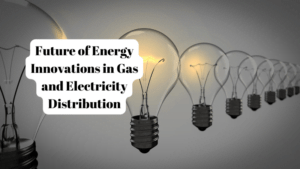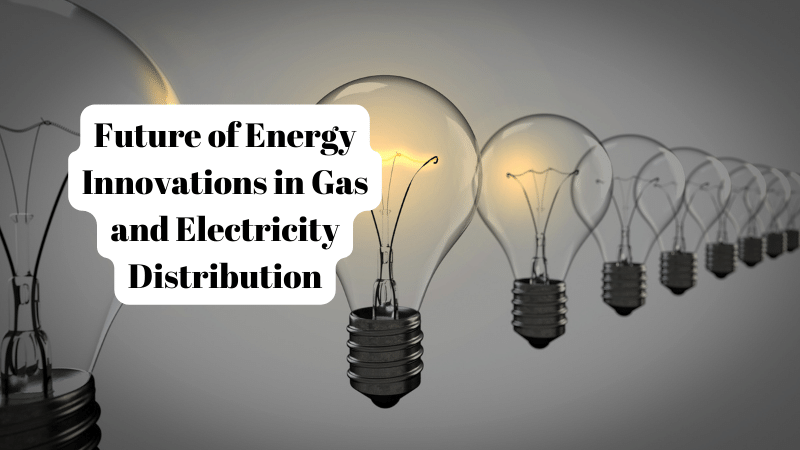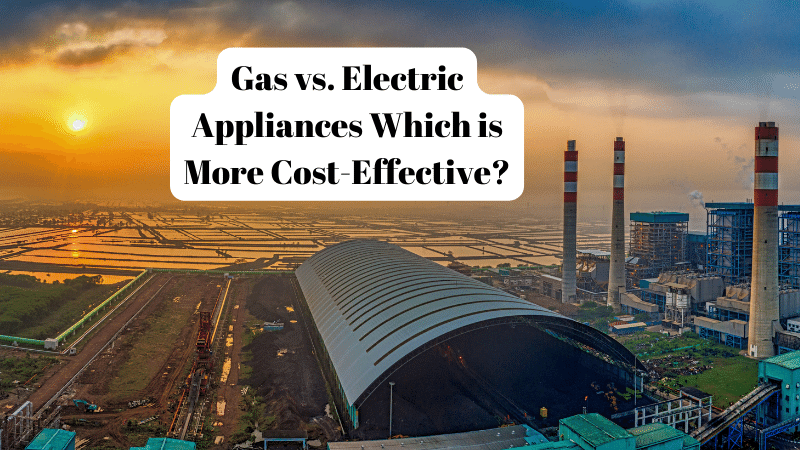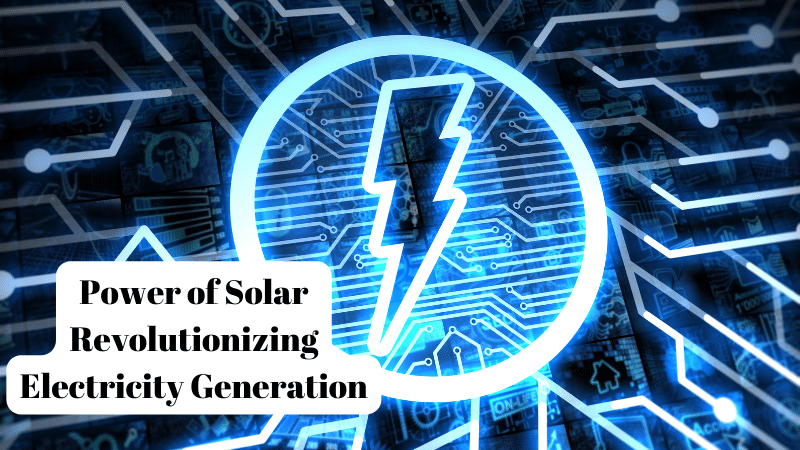Gas and electricity distribution play vital roles in assembly the energy wishes of our society. As the demand for cleaner and extra green electricity structures continues to grow, innovations in fuel and strength distribution have emerge as crucial for shaping the destiny of energy. This article explores the modern improvements in these regions and their capability impact on growing a sustainable and resilient power infrastructure.
Gas Distribution Innovations
Traditionally, gas distribution systems have relied on conventional techniques for deliver and delivery. However, the advent of clever grids has revolutionized the gasoline distribution landscape. Smart grids utilize superior technologies, such as clever meters and real-time monitoring, to permit extra efficient and dependable gasoline distribution. Smart meters provide purchasers with real-time facts on their fuel consumption, empowering them to make knowledgeable choices approximately their power usage. This not best helps lessen electricity waste but also improves basic device efficiency.
Furthermore, the integration of advanced information analytics performs a important function in improving gasoline distribution. By studying sizeable quantities of data, application businesses can perceive styles and make data-driven choices regarding upkeep and optimization. Predictive protection technologies enable early detection of ability issues, permitting for proactive measures to save you disruptions and enhance the protection and reliability of gasoline distribution networks. Similarly, sophisticated leak detection structures utilize sensors and analytics to pick out and address fuel leaks promptly, lowering environmental risks and enhancing safety.
In addition to optimizing present fuel distribution infrastructure, the incorporation of renewable gases into the network offers another road for innovation. Biomethane and hydrogen are rising as renewable fuel options with the capacity to replace or complement traditional fossil fuels. The project lies in seamlessly integrating those renewable gases into the existing distribution network, as their homes and managing requirements vary from those of natural gas. However, improvements in gas mixing technology and infrastructure changes provide promising answers for incorporating renewable gases and accomplishing a greener fuel distribution system.
Electricity Distribution Innovations
Similar to gasoline distribution, traditional strength distribution structures are present process transformative adjustments due to improvements in smart grids. Smart grids utilize advanced sensing, communication, and manipulate technology to permit more efficient and dependable electricity distribution. Smart meters, a key aspect of clever grids, offer real-time information on electricity consumption, enabling customers to actively control their energy usage. Additionally, demand response applications allow grid operators to modify power intake for the duration of height periods, decreasing stress on the grid and selling more efficient strength use.
One of the widespread demanding situations in strength distribution is the intermittent nature of renewable electricity sources such as sun and wind. However, clever grids facilitate the integration of renewable power sources through effectively dealing with their variability and unpredictability. By tracking strength era and consumption in real-time, clever grids can balance supply and demand, optimize electricity flows, and ensure grid stability. This integration of renewable power resources contributes to a cleaner and more sustainable energy distribution system.


Energy garage technology also play a essential function in advancing power distribution. Battery technologies, such as lithium-ion batteries, are extensively used for storing extra energy and offering it in the course of top demand. These power garage structures not handiest help stabilize the grid but also allow more utilization of renewable strength sources. Emerging electricity storage technologies, such as drift batteries and compressed air energy storage, provide additional alternatives for green energy distribution, imparting scalability and flexibility to the grid.
Moreover, the idea of microgrids is gaining traction as a decentralized method to strength distribution. Microgrids are smaller-scale power distribution networks that can perform independently or in connection with the primary grid. They provide benefits such as multiplied resilience, localized generation, and stepped forward grid management. Microgrids are particularly precious in regions inclined to electricity outages or where grid infrastructure is inadequate. By allowing local generation and consumption, microgrids make contributions to power efficiency and provide communities with extra manipulate over their power supply.
Synergies and Challenges
The synergy among fuel and energy distribution improvements holds big ability in shaping a extra sustainable strength future. Power-to-gas technology are an great example of this synergy. These technology allow for the conversion of surplus electricity into hydrogen or artificial natural gas, which can then be injected into the current gasoline distribution network. This procedure no longer only allows the garage of extra renewable strength but additionally enables the utilization of renewable gases for various applications, such as heating, transportation, and industrial processes. By combining the strengths of both gas and power distribution systems, power-to-gas technology make a contribution to grid stability, power flexibility, and carbon emissions reduction.


However, regardless of the substantial opportunities supplied by means of improvements in gas and power distribution, there are challenges that should be addressed for their successful implementation. Regulatory and coverage frameworks want to keep pace with technological improvements to ensure a supportive environment for innovation. Clear suggestions and standards are important to cope with protection concerns, interoperability, and statistics privacy in smart grids. Additionally, market systems should incentivize the adoption of innovative technology and guide the integration of renewable gases into current distribution networks.
Infrastructure upgrades and investments pose some other challenge. The transition to clever grids and the integration of renewable gases require massive changes to present infrastructure. Upgrading the distribution networks, putting in smart meters, and imposing superior analytics systems involve large costs. Collaboration among stakeholders, which includes governments, application companies, and era providers, is vital to mobilize the essential investments and force the transition to extra advanced and sustainable energy systems.
Furthermore, public acceptance and cognizance play a crucial position in the a success implementation of fuel and strength distribution innovations. It is vital to teach and engage clients about the advantages of smart grids, clever meters, and renewable gases. Transparent communication concerning the safety, reliability, and environmental advantages of these improvements can assist construct consider and encourage consumer participation. Engaging with communities and addressing any concerns related to the integration of renewable gases or the installation of smart meters can assist overcome resistance and foster public support.
Conclusion
Innovations in fuel and power distribution are reshaping the future of energy. The adoption of smart grids, superior statistics analytics, and renewable gasoline integration are revolutionizing traditional distribution systems, making them extra efficient, reliable, and sustainable. These innovations enable real-time monitoring, call for response, and predictive maintenance, enhancing gadget performance and lowering strength waste. The integration of renewable energy assets and energy garage technologies similarly strengthens the transition closer to cleaner and greener power systems.
The synergies between fuel and power distribution innovations, such as power-to-gas technologies, offer specific opportunities for maximizing the blessings of each systems. However, demanding situations related to regulations, infrastructure upgrades, and public attractiveness need to be addressed for a hit implementation. Increased collaboration, supportive policies, and public engagement are vital to conquer these demanding situations and force the adoption of progressive solutions.
As we envision a destiny with a more sustainable and resilient energy infrastructure, the improvements in gasoline and energy distribution will maintain to play a pivotal role. By embracing these innovations and investing in research and development, we can create a cleaner, more efficient, and environmentally friendly energy device that meets the needs of the gift whilst safeguarding the future.






My brother recommended that I check out this website, and he was spot on. This article truly brightened my day. You wouldn’t believe how long I had been searching for this information. Thank you!
Aluminum Pipes : Lightweight and resistant to corrosion, aluminum pipes are used in HVAC and automotive applications. ElitePipe Factory in Iraq offers durable aluminum pipe solutions.
I would like to thank you for the efforts you have put in writing this website. I am hoping the same high-grade website post from you in the upcoming as well. In fact your creative writing abilities has encouraged me to get my own site now. Really the blogging is spreading its wings quickly. Your write up is a good example of it.
I’m not sure where you’re getting your info, but good topic. I needs to spend some time learning much more or understanding more. Thanks for great information I was looking for this information for my mission.
It’s really a cool and helpful piece of information. I am satisfied that you simply shared this helpful information with us. Please stay us up to date like this. Thanks for sharing.
tk5yky
z09ovx